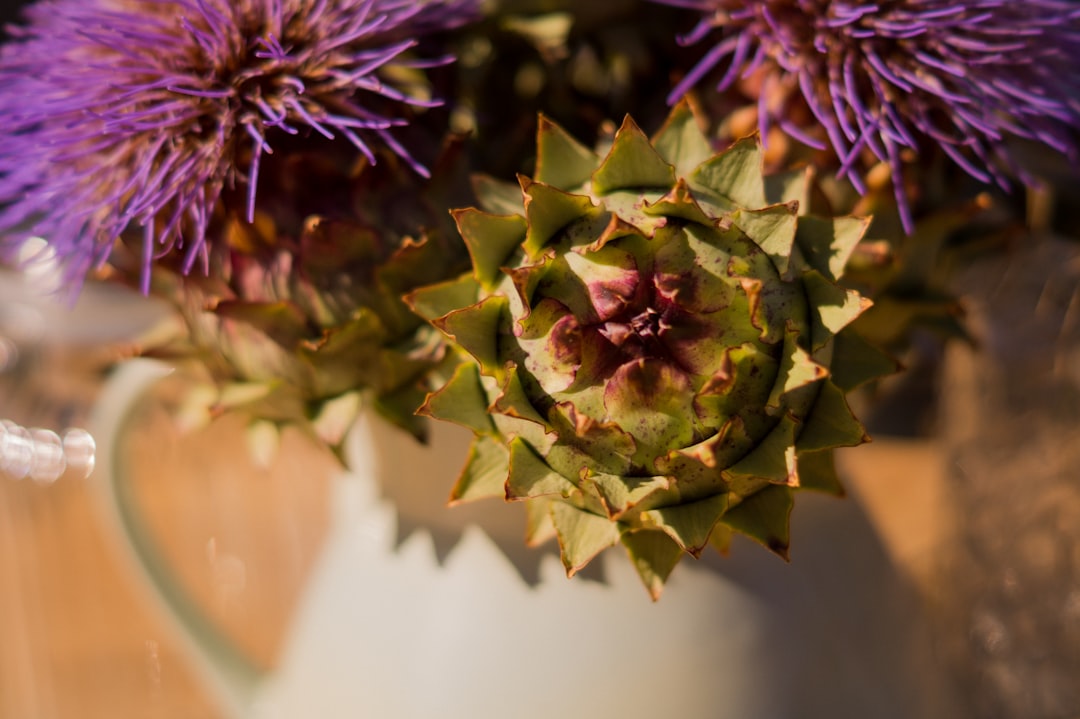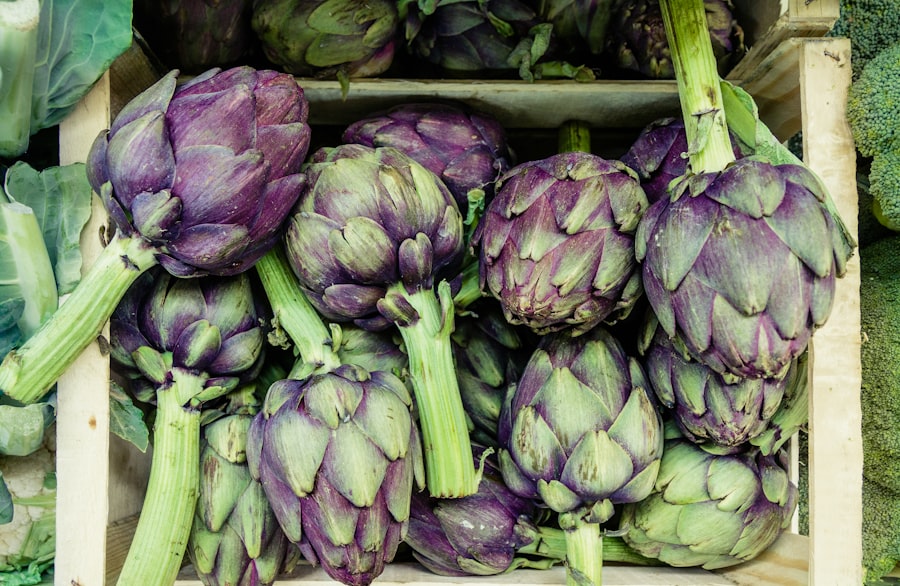Artichoke Harvesting: When to Pick Your Crop

Artichokes have a long and rich history, dating back to ancient times. They were highly prized by the Greeks and Romans for their medicinal properties and were considered a delicacy. Today, artichokes are enjoyed around the world for their unique flavor and versatility in cooking.
Proper harvesting techniques are essential to ensure that artichokes are picked at the right time and in the right way. Harvesting too early or too late can result in a less flavorful and tough artichoke. By understanding the basics of artichoke harvesting, you can enjoy the full potential of this delicious vegetable.
Key Takeaways
- Understanding the basics of artichoke harvesting is essential for a successful harvest.
- The artichoke plant has a unique growth cycle that requires specific conditions for optimal growth.
- Climate, soil, and water are crucial factors that affect artichoke harvesting.
- Knowing when your artichokes are ready to be picked is important to ensure maximum flavor and quality.
- Proper tools and techniques are necessary for harvesting artichokes, and storage and preservation methods can prolong their shelf life.
Understanding the Artichoke Plant and Its Growth Cycle
The artichoke plant, scientifically known as Cynara cardunculus var. scolymus, is a perennial plant that belongs to the thistle family. It has large, silvery-green leaves and produces beautiful purple flowers if left to mature. The edible part of the artichoke is actually the immature flower bud.
The growth cycle of an artichoke plant can be divided into several stages. It starts with planting the seeds or transplanting young seedlings into well-prepared soil. The plant then goes through a vegetative growth phase, where it develops its leaves and establishes its root system.
Once the plant reaches maturity, it enters the flowering stage. This is when the artichokes start to form on the plant. The flower buds are harvested before they fully open, as this is when they are at their most tender and flavorful.
Factors Affecting Artichoke Harvesting: Climate, Soil, and Water
Artichokes thrive in Mediterranean climates, where they receive mild winters and cool summers. They require full sun exposure to grow properly. The ideal temperature range for artichokes is between 60°F (15°C) and 75°F (24°C). Extreme heat or cold can negatively affect the growth and development of the plant.
Artichokes prefer well-draining soil that is rich in organic matter. They are tolerant of a wide range of soil types, but they perform best in loamy or sandy soil. The pH level of the soil should be between 6.5 and 7.5 for optimal growth.
Water is another crucial factor in artichoke cultivation. The plants require regular watering, especially during dry periods. However, overwatering can lead to root rot and other diseases. It is important to strike a balance and provide the plants with enough water to keep the soil consistently moist but not waterlogged.
Knowing When Your Artichokes are Ready to be Picked
| Indicator | Measurement | Ideal Range |
|---|---|---|
| Artichoke Size | Diameter of the bud | 3-5 inches |
| Color | Greenness of the bud | Dark green |
| Spacing | Distance between buds | 6-8 inches |
| Texture | Firmness of the bud | Firm and tight |
| Leaves | Appearance of the leaves | Green and healthy |
Determining when artichokes are ready to be harvested can be a bit tricky, as it depends on several factors such as the variety of artichoke, growing conditions, and personal preference. However, there are some general signs that indicate maturity.
One of the main indicators is the size of the artichoke bud. It should be large and plump, with tightly closed leaves. The bud should feel firm when gently squeezed. If the leaves start to open or spread apart, it means that the artichoke is overripe and may not be as tender.
Another sign of maturity is the color of the artichoke bud. Most varieties have a deep green color when they are ready to be harvested. However, some varieties may have a purple or bronze hue. It is important to know the specific characteristics of the variety you are growing to determine when it is ripe.
How to Properly Harvest Artichokes: Tools and Techniques
To harvest artichokes, you will need a few essential tools. These include a sharp knife or pruning shears, a basket or container for collecting the harvested artichokes, and gloves to protect your hands from the thorny leaves.
To harvest an artichoke, start by cutting the stem about an inch (2.5 cm) below the bud. Be careful not to damage any neighboring buds or leaves. Next, remove any small leaves or thorns from the base of the bud.
Once you have harvested the artichokes, place them in a basket or container to prevent bruising. It is best to harvest artichokes in the morning when the temperature is cooler, as this helps to preserve their freshness and flavor.
Tips for Prolonging Artichoke Shelf Life: Storage and Preservation

To prolong the shelf life of freshly harvested artichokes, it is important to store them properly. The best way to store artichokes is in the refrigerator. Place them in a plastic bag or wrap them in a damp paper towel to prevent them from drying out.
Fresh artichokes can be stored in the refrigerator for up to a week. However, it is best to consume them as soon as possible for optimal flavor and texture.
If you have an abundance of artichokes and want to preserve them for later use, there are several methods you can try. One popular method is freezing. To freeze artichokes, blanch them in boiling water for a few minutes, then plunge them into ice water to stop the cooking process. Drain them well and pack them into freezer-safe containers or bags.
Maximizing Artichoke Yield: Harvesting Techniques for Large-Scale Production
For commercial artichoke production, maximizing yield is crucial. There are several strategies that can be employed to achieve this goal.
One technique is staggered planting. By planting artichokes at different times throughout the year, you can ensure a continuous harvest and maximize yield. This also helps to spread out the workload and reduce the risk of crop failure due to weather or pests.
Another technique is proper spacing. Artichoke plants require ample space to grow and develop properly. By providing enough room between plants, you can prevent overcrowding and promote better air circulation, which reduces the risk of disease.
Common Mistakes to Avoid When Harvesting Artichokes
When harvesting artichokes, there are some common mistakes that should be avoided to ensure a successful harvest.
One mistake is harvesting the artichokes too early. It is important to wait until the buds are fully developed and have reached their maximum size before harvesting. Harvesting immature artichokes can result in a less flavorful and tough vegetable.
Another mistake is not using the proper tools. It is important to use a sharp knife or pruning shears to harvest artichokes, as this helps to prevent damage to the plant. Dull tools can crush the stems and leaves, leading to reduced yield and potential disease.
Harvesting Artichokes for Different Culinary Purposes: Fresh, Canned, or Frozen
Artichokes can be used in a variety of culinary dishes, both fresh and preserved. Fresh artichokes are often steamed or boiled and served as a side dish or incorporated into salads, dips, or pasta dishes.
Canned artichokes are a convenient option for those who want to enjoy artichokes year-round. They can be used in a variety of recipes, such as pizzas, sandwiches, or pasta sauces.
Frozen artichokes are another popular option for preserving the harvest. They can be used in soups, stews, or casseroles. Frozen artichokes retain their flavor and texture well and are a great option for those who prefer not to can their harvest.
Celebrating the Art of Artichoke Harvesting and Enjoying the Fruits of Your Labor
Artichoke harvesting is a rewarding experience that allows you to enjoy the fruits of your labor. By understanding the basics of artichoke cultivation and harvesting, you can ensure a successful harvest and enjoy the unique flavor and versatility of this delicious vegetable.
Whether you are a home gardener or a commercial producer, proper harvesting techniques are essential to maximize yield and quality. By following the tips and techniques outlined in this article, you can become an expert in artichoke harvesting and enjoy the many culinary delights that this vegetable has to offer. So go ahead, plant some artichokes, and embark on a journey of discovery and deliciousness!
If you’re wondering when to harvest artichokes, you’ll find all the answers you need in this informative article from Lawn World. From understanding the signs of readiness to tips on proper harvesting techniques, this article covers it all. Whether you’re a seasoned gardener or a beginner, this resource will guide you through the artichoke harvesting process. Check out the article here for expert advice on when and how to harvest your artichokes. And while you’re at it, don’t forget to explore Lawn World’s sitemap for more helpful gardening tips and tricks.
FAQs
What are artichokes?
Artichokes are a type of vegetable that belong to the thistle family. They are typically harvested for their edible flower buds.
When is the best time to harvest artichokes?
Artichokes are typically harvested in the late spring or early summer, when the buds are still tight and compact.
How do you know when an artichoke is ready to be harvested?
Artichokes are ready to be harvested when the buds are firm and tightly closed. The buds will typically be about the size of a baseball.
What happens if you wait too long to harvest artichokes?
If you wait too long to harvest artichokes, the buds will begin to open and the leaves will become tough and fibrous. This will make the artichokes less palatable.
How do you harvest artichokes?
To harvest artichokes, use a sharp knife to cut the stem of the bud about 1-2 inches below the base of the bud. Be sure to wear gloves to protect your hands from the sharp thorns on the leaves.



